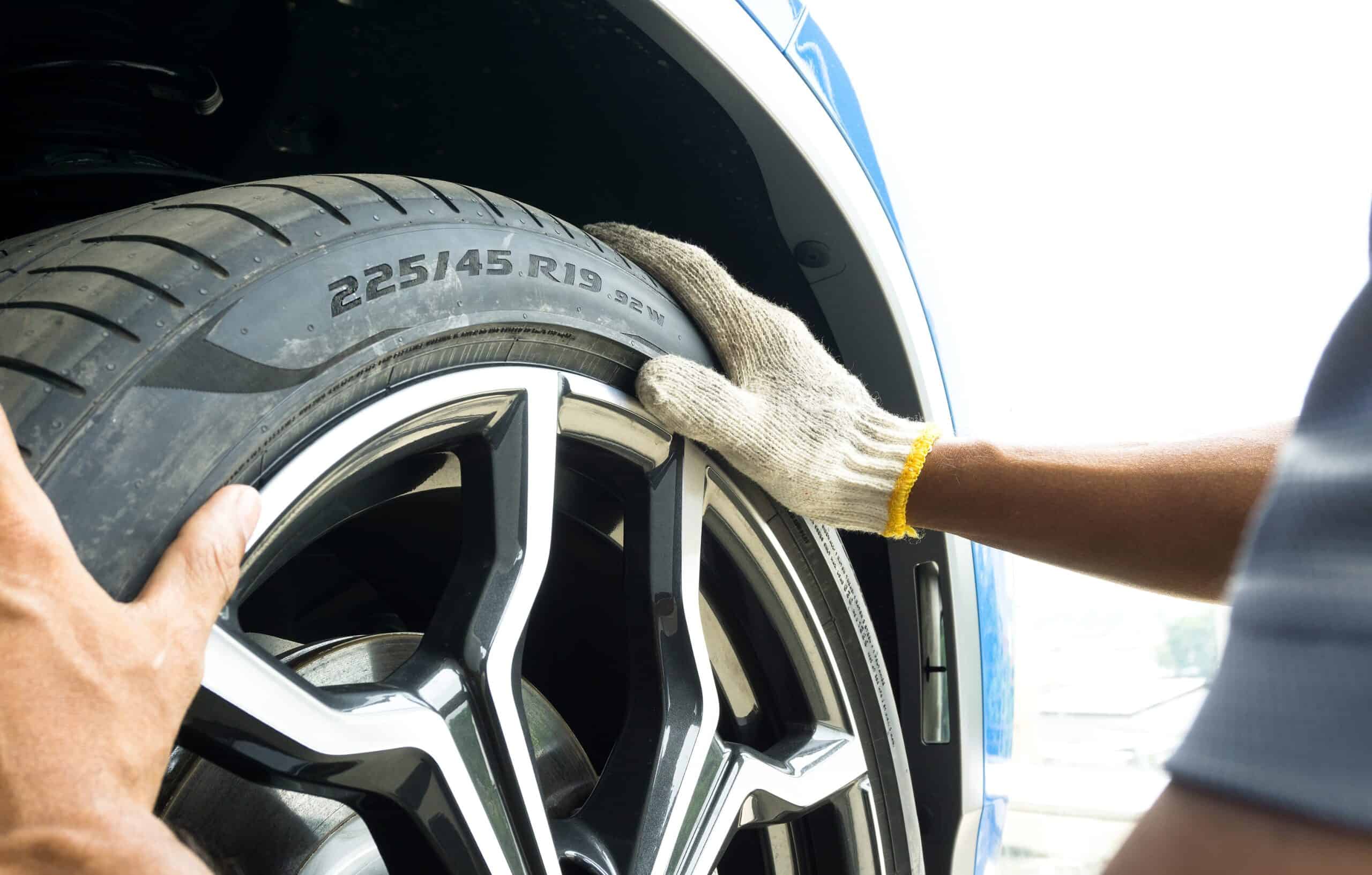Tyre Sizes Explained in a Nutshell
- Tyre size affects safety, handling, fuel efficiency, and comfort – getting it wrong can cost you.
- Tyre size codes (like 205/55R16 91V) break down the width, aspect ratio, construction, rim diameter, load index, and speed rating.
- Understanding tyre size meaning helps avoid common myths and poor-fitment issues that could lead to expensive repairs or wear.
- Tyre placards and owner’s manuals show the correct size – but professional checks are still essential after modifications.
- Coleman Tyres Wacol offers free fitment checks and personalised advice to ensure your tyres are safely and correctly fitted.
Introduction
If you’ve ever looked at the sidewall of your tyre and felt baffled by the jumble of numbers and letters – you’re not alone. But understanding tyre size is more important than most drivers realise. The right tyre size affects handling, braking, fuel efficiency and ride comfort. It also ensures your tyres are safely operated within your car’s limits.
In this guide on tyre sizes explained, we’ll break down the code, and help you understand the tyre size meaning. As your local family-run experts, Coleman Tyres Wacol is proud to support Brisbane and Ipswich drivers with trusted, personalised advice.
Why Tyre Sizes Matter
Tyre size directly affects how your vehicle performs. A properly fitted tyre ensures accurate steering, reliable braking, and a comfortable ride. The width of the tyre, aspect ratio, and rim diameter work together to keep your vehicle safe and stable.
Choosing the wrong tyre size comes with real risks. A wider tyre might rub against the wheel arch, while a narrower tyre could affect your speedometer and reduce maximum load capacity. Your fuel economy may suffer too – all because of mismatched tyre specifications.
The tyre placard inside your car lists the recommended size and is matched to your suspension and brake systems. Ignoring it may compromise how your car is safely operated.
“Our senior technician explains how the right tyre size helps maintain suspension geometry, supports your car’s load index, and prevents premature wear – especially on Queensland’s hot, high-traffic roads.”
Owner at Coleman Tyres & Mechanical
Understanding the tyre size meaning can help avoid these issues and ensure a smoother drive.
Decoding Tyre Size Notation
When it comes to how to read tyre size, let’s use an example: 205/55R16 91V. This code is part of the ISO metric system and appears on almost all modern tyres.
- 205 – The section width of the tyre in millimetres
- 55 – The aspect ratio: the tyre’s sidewall is 55% as tall as it is wide
- R – Stands for radial ply construction, the most common tyre construction
- 16 – The rim diameter (or wheel rim) in inches
- 91 – The load index, showing the tyre’s maximum load
- V – The speed rating, which indicates the maximum speed the tyre can handle safely
You may also come across:
- P-metric – Found on many passenger vehicles in Australia
- Euro-metric – Similar but omits the “P”
- LT (Light Truck) – Built for utes and vans with heavier loads
- Imperial sizes – Still used on mountain bike tyres (e.g. 26×1.95)
Additional markings:
- M+S – Mud and Snow
- XL – Extra Load
- Run-flat – Safe to drive short distances when punctured
- Tubeless tyres – Standard on most vehicles today
“At Coleman Tyres, we often see customers confused by speed ratings. We explain how to read tyre size codes in the real world – not just what’s printed – so people can drive with confidence.”
Owner at Coleman Tyres & Mechanical
Once you learn the format, tyre sizes become much easier to understand and apply to your own vehicle.
Common Tyre Categories & Their Typical Sizes
The tyre size meaning changes depending on your vehicle. Here’s a quick breakdown:
- Passenger car tyres: 14″–18″ wheel diameter and 175–225 mm tyre width
- SUV and 4WD tyres: Larger 16″–22″ rim diameter, wider tread width, and reinforced construction
- Light truck (LT) tyres: Built for durability with strong sidewall height and higher load carrying capacity
- Performance tyres: Wider and lower profile for better handling
- Mountain bike tyres: Different size format (e.g. 29×2.1) with actual width in inches
“Our wheel and tyre specialist often recommends a lower profile radial tyre for highway use, and a reinforced light truck tyre for utes and vans doing heavy work.”
Owner at Coleman Tyres & Mechanical
Choosing the right tyre dimensions for your category means getting the balance of comfort, safety, and performance right.
Finding the Right Tyre Size for Your Vehicle
To find the right tyre size, check your tyre placard – typically located inside the glove box, driver’s door, or near the fuel cap. It lists your vehicle’s recommended load rating, speed rating, and inflation pressure.
You can also refer to your owner’s manual, but keep in mind that modifications like bigger car wheels, suspension lifts or new rims may affect clearance and load handling.
Online tools like a tyre size calculator are helpful, but we always recommend an in-person check. At Coleman Tyres Wacol, we assess your tyre sidewall, bead diameter, and tyre section width to make sure everything is correctly fitted.
Book a free tyre size check with our team – we’ll make sure your tyres are safe, legal, and ready for whatever the road throws at you.
Frequently Asked Questions
Yes – but only within safe limits. Changes affect overall diameter, tyre section, and gearing.
Unless factory-designed that way, we advise against it. Stick to the same tyre size for safety and consistency.
They follow the same format, but tyre construction and tread differ. Always check compatibility when swapping.
Absolutely. Even small changes can affect sidewall of the tyre and clearance.
“Here at Coleman Tyres, we help people daily with these questions. Our goal is to simplify tyre sizes and give you real, road-safe answers.”
Owner at Coleman Tyres & Mechanical
Tyre Size Myths Debunked
Let’s bust a few common tyre myths we hear every week at Coleman Tyres.
Not true. The rim diameter might be the same, but the tyre width, aspect ratio, and tyre construction all impact fitment and performance.
Not always. A wider tyre may offer more grip, but it can also reduce steering response, affect fuel efficiency, or cause rubbing.
Wrong. Using tyres below the correct load index or speed rating could void insurance or compromise safety – even at lower speeds.
While tools like a tyre size calculator are handy, they can’t account for offset, camber, or suspension mods. A professional inspection is essential.
How Tyre Size Affects Your Wallet
The wrong tyre size doesn’t just impact safety – it can cost you more in the long run.
Oversized tyres can put stress on your suspension, drivetrain and brakes. You may experience faster wear, less stability, or even fail a roadworthiness test. Undersized tyres can lead to poor traction and uneven wear patterns.
Fuel efficiency drops when tyre specifications don’t match your vehicle. That’s because the rolling resistance increases, forcing your engine to work harder. The wrong tyre diameter can also change gearing and fuel use.
Even resale value can be affected. Buyers may view incorrect tyres as a red flag, especially if they see mismatched tyre sidewall heights or unusual wear.
“We help customers make smart choices – not just for safety, but long-term value too. The right tyre size helps reduce costs and keep your vehicle in sound condition.”
Owner at Coleman Tyres & Mechanical
When Should You Recheck Your Tyre Size?
There are times when your original tyre size might no longer suit your vehicle:
- After changing wheels or rims
- After suspension lifts or modifications
- When switching between highway and off-road driving
- If your car is now used for towing or heavier loads
- When buying a used car
Each of these changes can affect the required tyre section width, sidewall height, or maximum load rating.
“Even a minor change can throw out your tyre’s performance. That’s why we offer free sizing checks – to make sure your tyres are matched to how your car’s actually used.”
Owner at Coleman Tyres & Mechanical
Conclusion & Next Steps
Understanding tyre sizes gives you the power to drive safer, smarter, and more confidently. Whether you’re upgrading your current tyres, changing rims, or just doing research, knowing the tyre size meaning helps avoid expensive mistakes.
At Coleman Tyres Wacol, we’ve supported Brisbane and Ipswich drivers for over 25 years. We know how to read tyre size codes, check fitment properly, and help you choose the best tyres for your lifestyle.
View our tyre range or book a free fitment check for personalised, expert advice.




